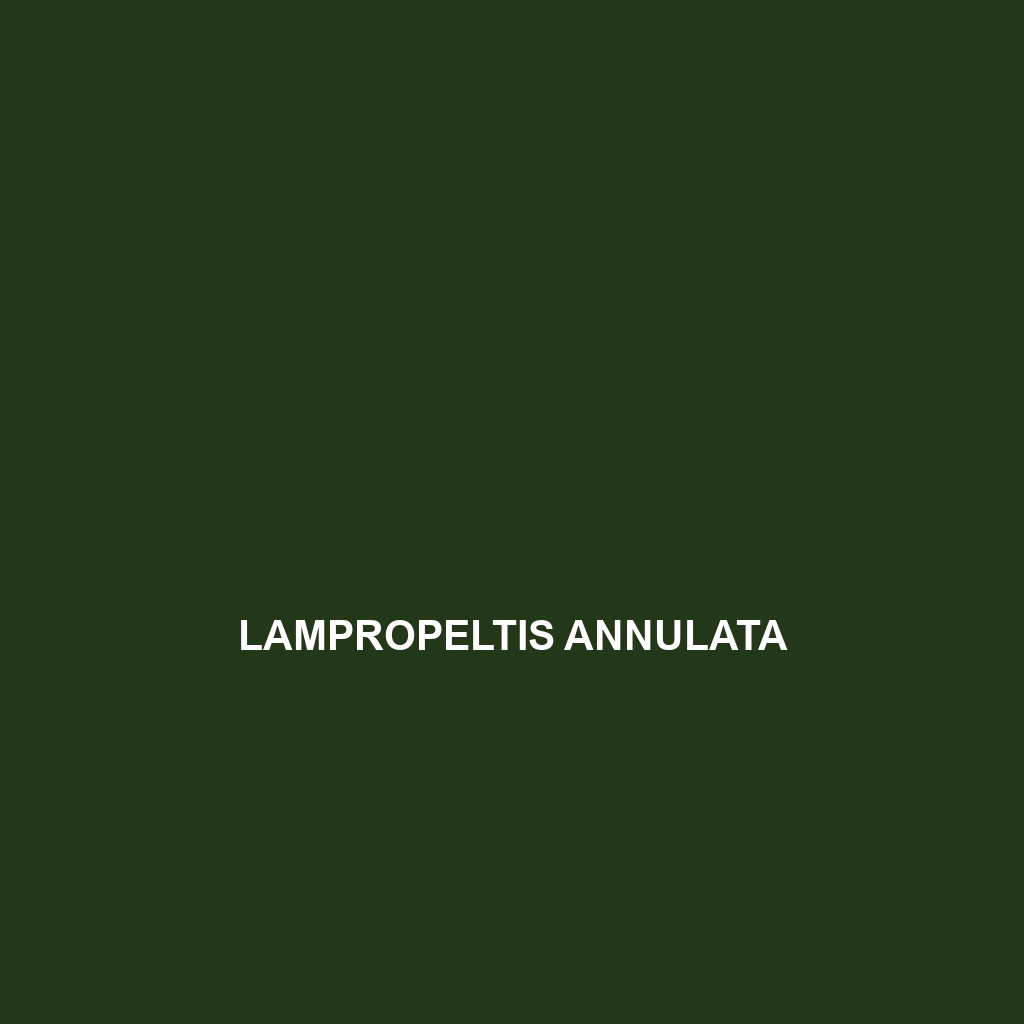Discover the Opisthotropis kikuzatoi, a striking snake native to the rainforests of Southeast Asia, thriving in humid environments near streams. Known for its slender body, unique camouflage, and nocturnal hunting habits, this fascinating species plays a crucial role in maintaining ecosystem balance by preying on insects and small aquatic animals.
Tag: predatory snakes
Morelia azurea
The Morelia azurea, or Azure Python, is a strikingly colored snake native to the rainforests of New Guinea, reaching lengths of 2 to 3 meters. Known for its vibrant blue and green hues and nocturnal hunting behavior, this robust predator plays a crucial role in regulating local ecosystems.
Micrurus potyguara
<p><b>Micrurus potyguara</b>, known as the Potyguara Coral Snake, is a striking species found in the rainforests and savannas of Brazil, distinguished by its vibrant bands of red, yellow, and black. This carnivorous snake plays a crucial role in its ecosystem by regulating populations of small reptiles and amphibians while exhibiting fascinating behaviors, such as "feigning death" when threatened.</p>
Malpolon monspessulanus
<p><b>Malpolon monspessulanus</b>, commonly known as the Montpellier snake, is a medium-sized snake found in warm habitats across Southern Europe, characterized by its yellowish-green or brownish color and distinctive large head. This carnivorous species plays a crucial role in its ecosystem by regulating populations of small mammals and birds, while also exhibiting interesting behaviors such as mimicry and rapid movement.</p>
Lycodon meridionalis
Discover the Lycodon meridionalis, or southern wolf snake, a nocturnal predator thriving in tropical and subtropical Southeast Asia's diverse habitats. With its slender body, distinct coloration, and role as an essential ecological balance keeper, this species primarily feeds on small mammals and lizards, showcasing remarkable adaptability.
Lycodon muelleri
<br><b>Lycodon muelleri</b>, commonly known as Mueller's wolf snake, is a non-venomous, medium-sized snake native to the tropical and subtropical regions of Southeast Asia, characterized by its striking dark coloration with lighter bands and a diet mainly consisting of small mammals and reptiles. This nocturnal predator thrives in humid environments, contributing significantly to the ecological balance of its habitat.
Liopholidophis baderi
<b>Liopholidophis baderi</b>, commonly known as Bader's snake, is a slender, vibrant green, brown, or yellow snake found in the tropical rainforests of Central Africa, notable for its excellent climbing abilities and nocturnal hunting behavior. This vulnerable species plays a crucial role in its ecosystem by controlling small mammal and insect populations, contributing to biodiversity.
Leptodeira septentrionalis
Discover the fascinating Leptodeira septentrionalis, or northern cat-eyed snake, known for its vibrant coloration, nocturnal behavior, and adaptability in varied habitats from tropical rainforests to coastal areas. This medium-sized, arboreal predator plays a crucial role in maintaining ecological balance by preying on small animals while being an important food source for larger predators.
Lampropeltis alterna
The Lampropeltis alterna, commonly known as the alterna kingsnake, is a striking, non-venomous snake native to the temperate forests and shrublands of the southwestern United States, featuring a slender body with vibrant bands of orange, yellow, and black. This nocturnal predator plays a vital role in its ecosystem by controlling the populations of small mammals and other reptiles.
Hypsiglena unaocularus
<p><b>Hypsiglena unaocularus</b>, commonly known as the one-eyed snake, is a small, nocturnal predator native to the arid regions of the southwestern United States and northern Mexico, characterized by its distinctive coloration and dark lateral stripe. These adaptable snakes primarily feed on small mammals, lizards, and insects, playing a crucial role in maintaining ecological balance in their habitat.</p>









